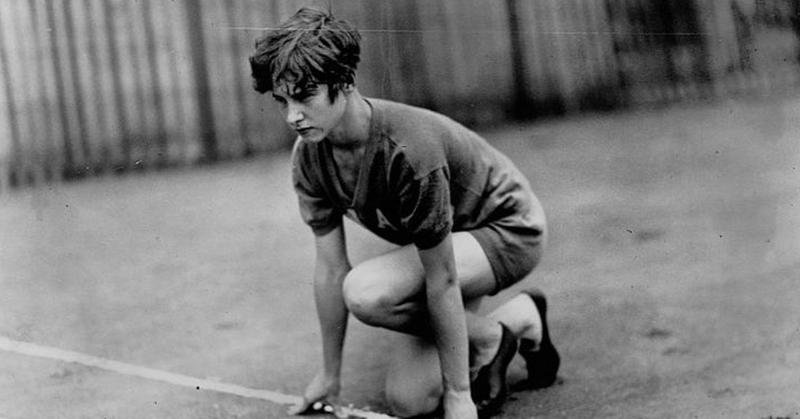The Unbelievable Comeback Story Of Elizabeth Robinson Schwartz, Olympic Heroine And Accident Victim
By | August 29, 2021

The ranks of Olympic gold medalists are filled with inspirational stories of the triumph of the human spirit, but not many can top that of Elizabeth "Betty" Schwartz, an Olympic heroine who essentially came back from the dead to win the gold.
Olympic Dreams Come True
One day in 1928, when Betty Schwartz (then Robinson) was an 18-year-old high school student in Harvey, Illinois, she sprinted to catch a train after school. Her school's track coach happened to be on that train, and he was so impressed by what he saw that he offered himself up as her private coach, the school having no girls' track team.
Just a few months later, Schwartz's times were fast enough to qualify for the upcoming 1928 Olympics in Amsterdam. Despite a snafu that left her with two left shoes until just before the race, Schwartz became the only member of the U.S. women's track team to qualify for the final event, the 100-meter race, which ended with a photo finish between Schwartz and Canada's Fanny Rosenfeld. As it was the first year the Olympics included women's track events, Schwartz became the first person to win the gold. She added a silver medal later in the games as a member of the American 4 x 100 meters relay team.

Tragic Fate
Schwartz had previously considered running little more than a hobby, but after she won her gold medal, she embarked upon a serious training routine to prepare for the 1932 Olympics. Tragically, just the summer before the games, she made the fateful decision to join her pilot cousin on a short flight to cool off in the Chicago sun. Just outside the city, the engine stalled and the aircraft plummeted to the ground, crushing its occupants.
The first person on the scene took one look at Schwartz and assumed she was dead. She was unresponsive and bleeding from a large gash on her head, one of her arms was shattered, and one of her legs was snapped in three places and grotesquely twisted. She was taken directly to the local undertaker, who was the first person to realize she was still breathing. She spent the next 11 weeks in the hospital, where surgeons repaired her mangled leg with a steel rod and pins, which enabled her to get around with the help of crutches but didn't return her to anywhere near racing form. After her recovery, her injured leg was a half-inch shorter than her other leg, and doctors were certain she would never walk again.

The Comeback Kid
For a time after her recovery, Schwartz fell into a deep depression that confined her to her bed, but her brother-in-law convinced her to accompany him on increasingly longer walks until she was once again zooming around the block. With her sights set on the 1936 Olympics, she began training again. She couldn't crouch at the starting block for sprints anymore, but only the first runner on a relay team needed to do that, so there was nothing stopping her from competing as a relay runner.
Schwartz's hard work paid off. At the 1936 Olympics, she grabbed the baton as the Americans edged up on the German team and played a key role in closing the gap before handing off to her teammate for the last leg of the race. After one of the German runners dropped the baton when she tried to switch hands, the U.S. won the race, earning Schwartz—who had, just a few years earlier, found herself on the undertaker's table—her second Olympic gold medal.

